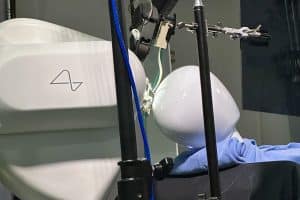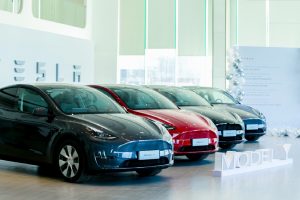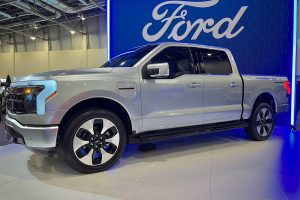The electric vehicle revolution is fully underway. Led by successful vehicles like the Tesla Model 3, which are compelling alternatives to comparable internal combustion cars, EV sales are taking off. The momentum of EVs as a whole may hit some challenges soon, however, partly due to the rising prices of raw materials that are critical to the production of batteries.
The prices of lithium-ion batteries have seen a 90% decline to just about $130 per kWh. That’s very close to the widely targeted $100 per kWh level, which is estimated to be the point where EVs could become fully competitive with ICE cars in terms of cost. Expectations were high that the battery industry would hit $100 per kWh in 2024, but recent trends in the market suggest that this may not necessarily be the case.
INCREASING EV DEMAND
Benchmark Mineral Intelligence, a company that tracks the worldwide battery supply chain, noted that lower costs helped boost EV sales by 112% in 2021 to over 6.3 million units globally from the previous year. And sales are only poised to increase. EV leader Tesla, which sold nearly a million pure electric cars on its own in 2021, is looking to grow its deliveries by 50% this year — and estimates among TSLA bulls suggest that the company’s growth might be even more impressive.
Benchmark Mineral Intelligence notes that battery-grade cobalt prices are up 119% from January 1, 2020 through mid-January 2022. Nickel sulfate prices saw a 55% rise in price, and lithium carbonate saw a whopping 569% increase. Benchmark Mineral Intelligence chief data officer Caspar Rawles, in a statement to The Wall Street Journal, noted that some battery cell makers that typically offered long-term fixed-price contracts have ended up shifting to a variable price model instead. This allowed them to pass on some of the costs of rising material prices to consumers.
What is quite unfortunate is that battery materials may remain in short supply for some time. China, which dominates the battery supply chain, is also aggressively increasing its electric vehicle production. And considering that it generally takes about seven to ten years to deploy a new mine, a lot of key battery components may end up being supply-constrained in the coming years.
ADDRESSING A SUPPLY SHORTAGE
The rising prices of battery raw materials do not mean that the EV revolution would likely be slowed down, however. The battery recycling industry is now gaining some momentum, with companies like Redwood Materials — which is led by Tesla co-founder and former CTO JB Straubel — already preparing to sell recycled battery components to Panasonic for the production of battery cells at Tesla’s Gigafactory Nevada later this year. This helps foster a closed-loop system since Redwood also receives Panasonic’s battery scrap from Tesla’s Nevada facility.
Other initiatives that may help the auto sector weather the rising costs of battery materials involve a focus on batteries that use less expensive, more abundant components. Tesla China is among the companies that are at the forefront of this movement, with Giga Shanghai utilizing lithium iron phosphate (LFP) batteries for the Model 3 and Model Y. LFP batteries utilize iron in their cathodes instead of nickel and cobalt, making them less controversial and far more affordable.
And while LFP batteries typically result in vehicles with shorter range than cars equipped with nickel-based cells, tests from veteran electric vehicle owners in countries such as Norway are starting to reveal that iron-based cells are nothing to scoff at. Longtime EV advocate Bjorn Nyland, for example, recently conducted one of his 1,000-km tests in a base Model 3 equipped with an LFP battery that was produced in Gigafactory Shanghai. The vehicle performed amazingly despite the cold conditions and its relatively small 60 kWh battery pack.





